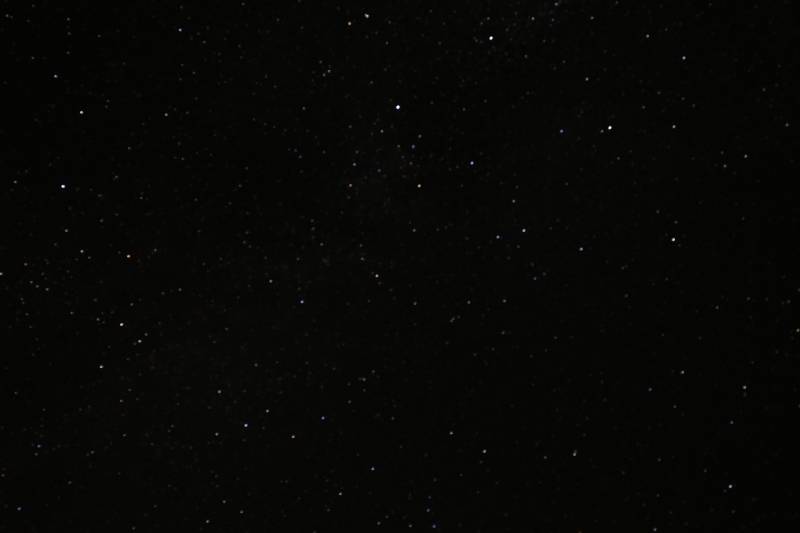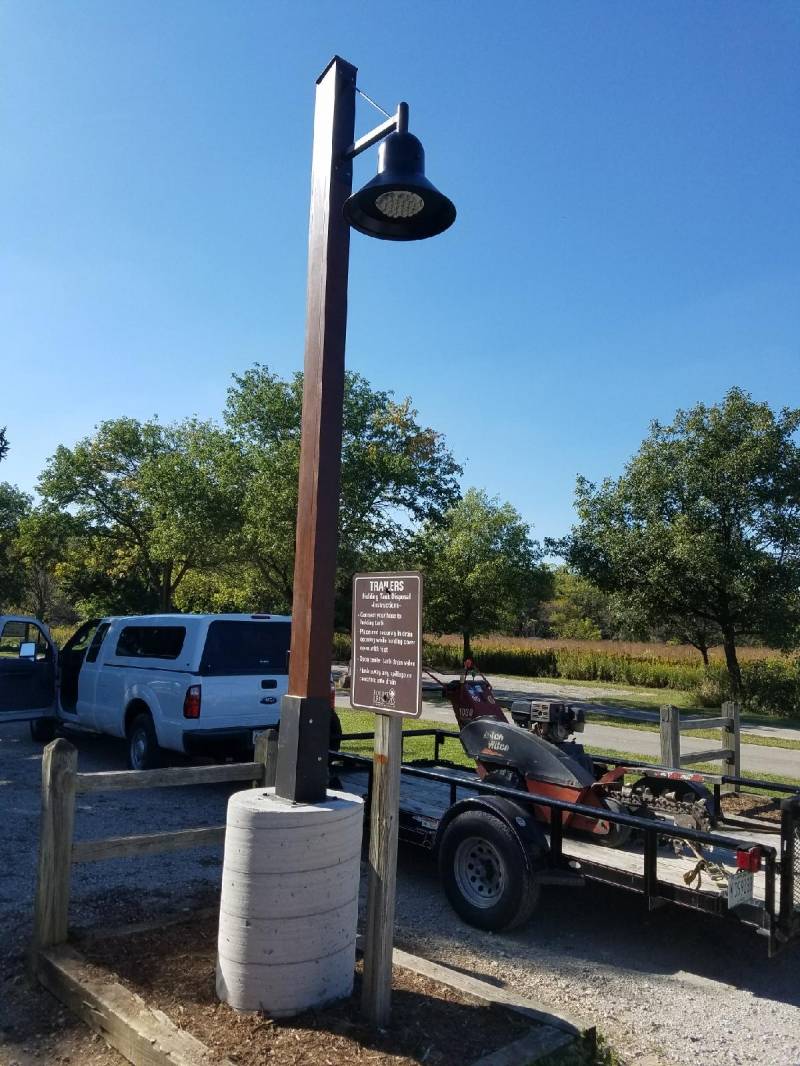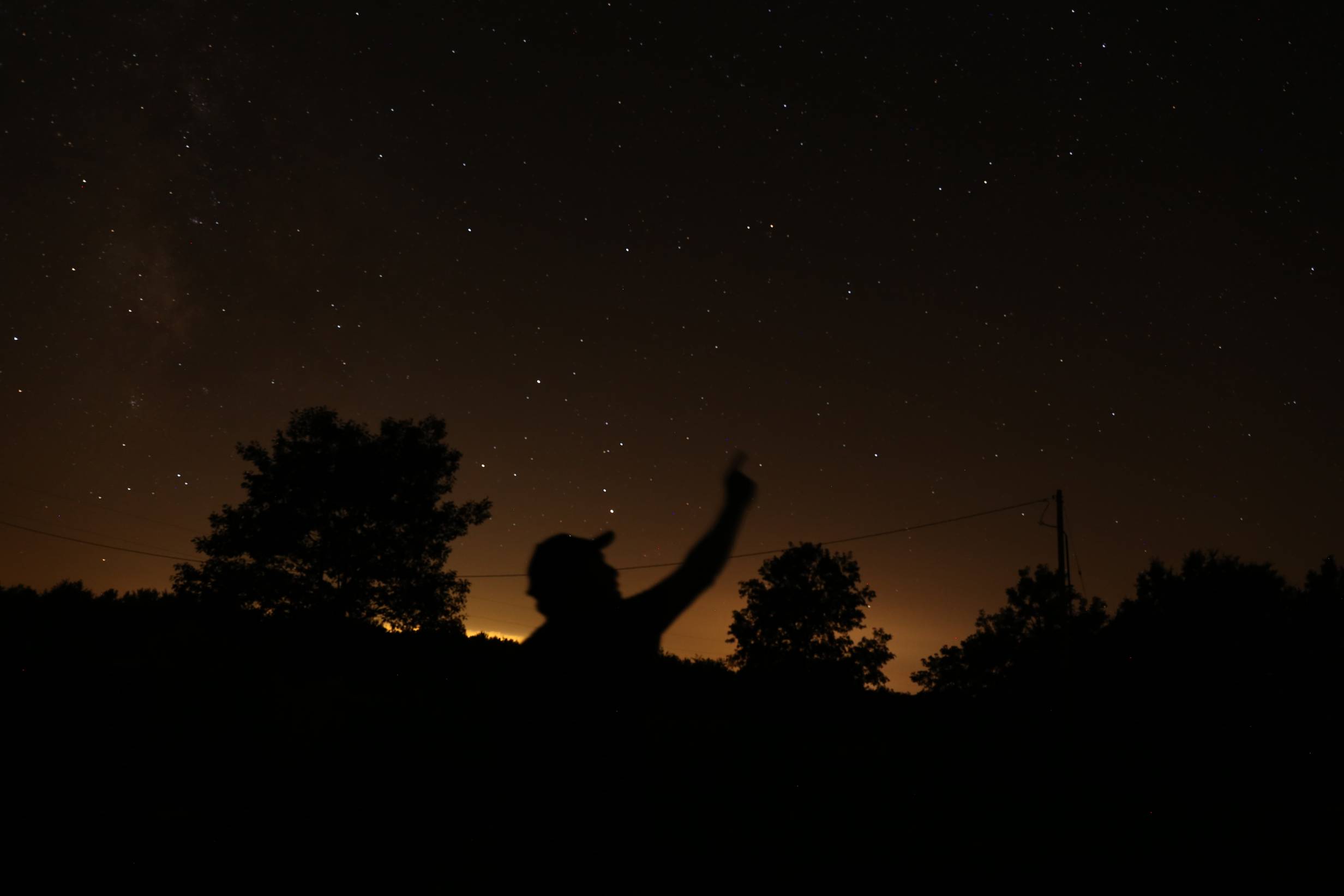A few years ago, I spent one night camping in Yellowstone (one night, by the way, is about all I could handle…coldness, sleeping on the ground, being constantly worried about being eaten by a bear…give me a bed and walls). Yellowstone has an astounding list of awe-inspiring natural features, but one that I didn’t even consider until night fell was the blanket of stars that appeared. Who knew it was possible to see so many at once? Champaign-Urbana is not necessarily a booming metropolis, and one can regularly spot some planets and constellations on a clear night, but I would guess many don’t consider how the amount of light that emanates from our mid-sized city crowds out the light from the stars. However, you don’t have to travel across multiple states to experience the brilliance of a sky full of stars. Over the past couple of years, a forest preserve about 30 miles from Champaign-Urbana, where the star visibility increases from a hundred or so to thousands, has quietly become a popular gathering spot for star-gazers. This increase in “astro-tourism” has inspired the Champaign County Forest Preserve District and CU Astronomical Society to pursue a Dark Sky certification for Middle Fork Forest Preserve near Penfield in rural Champaign County.
The groups got one step closer yesterday as the Champaign County Forest Preserve Board of Commissioners voted to continue the process of the Dark Sky designation. What does that mean exactly? According to their website, the International Dark Sky Assocation “is the recognized authority on light pollution and is the leading organization combating light pollution worldwide.” Becoming a “Dark Sky Place” involves showing “excellent stewardship of the night sky.” There are just over 50 “Dark Sky Parks” in the entire world, and no forest preserves. Currently, the town of Homer Glen, IL has a Dark Sky Community designation, but Middle Fork would be the first park in the state. The journey to “darkness” began after the CUAS found Middle Fork to be a great location for star-gazing events. They had few successful sessions, including a meteor shower viewing. David Leake, Director of the Staerkel Planetarium and CUAS member, described the impetus that really kicked off the Dark Sky project.

“A guy in our group, John Stone, got ahold of one of these sky quality meters. You point it up and it literally measures the brightness of the sky. He had a car with a moonroof that he took out. He mounted this thing on a tripod pointed up and interfaced it with his computer, and it took readings every few minutes or so, and he drove around the county taking measurements. It turns out Middle Fork is one of the darkest places in the county. That got the gears turning a little bit.”
Leake reached out to the CCFPD initially to no avail, but in 2015 the idea took hold. That’s when Middle Fork Supervisor Matt Kuntz got involved in the process, and his job was to address the lighting. “We started doing a light inventory,” says Kuntz. “The lights went outwards or up, so basically it was a complete redo of most of our lights.” Dark Sky lighting has five guidelines: Only be on when needed, only light the area that needs it, be no brighter than necessary, minimize blue light emissions, and be fully shielded (pointing downward). Kuntz found a style that would work for the preserve and his team got to work. “We replaced almost every small fixture, but the big project was replacing the globe lights, the street lights. These new lights are so efficient. They are all down-facing, so we’re not losing that light to the atmosphere. I’ve been here 14 years and I’ve never thought about that. We were wasting all of that light for nothing. They triple the light output.”

So it’s all well and good to be able to see a whole bunch of stars in the sky, but there are many more benefits to using Dark Sky lighting. The IDA website describes the health impact of artificial light, noting that it increases “risks for obesity, depression, sleep disorders, diabetes, breast cancer and more.” Light pollution can also affect wildlife, which makes a difference in a place like Middle Fork. Nocturnal animals in particular are thrown off by excess light. Their hunting capabilities are impaired. Using Dark Sky lighting reduces these risks, and saves money by using less energy.
CCFPD Marketing Director Lisa Sprinkle is looking forward to the added draw this designation could add to the preserve. “From the marketing aspect it’s really exciting because it gives us a different side of the coin to market and introduce people to the forest preserve. It’s a new twist that we can add.” In addition to the new lighting, the Dark Sky certification depends on a commitment to educating visitors on light pollution. The CUAS plans to increase their programming, and the CCFPD will distribute literature to campers and other visitors, as well as add signage to the preserve.
Now with the board’s approval, the application will be submitted by January 29th with the official notification coming in April or May. The project has garnered $7500 in donations, which will provide three to four more lights. If approved, Middle Fork will have five years to become completely compliant, and they are already two-thirds of the way there. Middle Fork Forest Preserve may not be as widely known as Homer Lake or Lake of the Woods, but the Dark Sky project might just put it on the map.
Photos provided by the Champaign County Forest Preserve District.








